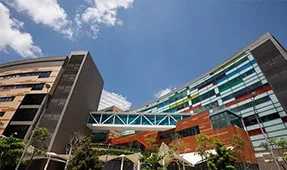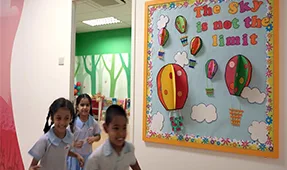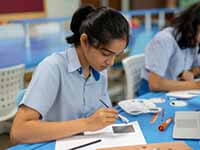Pedagogy simply refers to styles, methods and approach of teaching. It is the dynamic relationship between learning, teaching, and culture. Pedagogy is the “technology of instruction” that determines how schooling inputs are used in practice to impact learning outcomes. The word Pedagogy originated from the Greek word “Paidagogus, “, Paidos-child and agogos-leader.
The new normal with the global pandemic has made us shift to DIGITAL PEDAGOGY and a smooth transition of school culture is evident not only in styles of teaching, content for teaching but also feedback and assessments. Digital Pedagogy is the study and use of contemporary digital technologies in teaching and learning. It may be applied to online, hybrid and face-to-face learning environments. It is both the science, and the art and craft of today’s education. As rightly said, the domain of pedagogy is inside the human mind and with the right type of pedagogy, teachers can induce love of learning amongst learners.

Moving with the current times, teachers at GIIS are implementing digital pedagogy for meeting learning outcomes effectively. This also allows students to gain a deeper understanding of subject matter, and apply their learning experiences to their communities and their own lives.
The five approaches to learning (developing thinking skills, social skills, communication skills, self-management skills and research skills) along with the six approaches to teaching (teaching that is inquiry-based, conceptually focused, contextualized, collaborative, differentiated and informed by assessment) encompass the key values and principles of GIIS’ Digital Pedagogy.
Amongst recent modern, transformative pedagogies and with the enhancement in digital technology, blended learning has definitely emerged as a winner as it integrates online practices with traditional face-to-face class activities in a planned, pedagogically valuable manner. Blended Learning Model-Hybrid Education Framework involves integration and the right blend of curriculum standards with technology, ensuring incorporation of other pedagogies as experiential, embodied, computational learning & multiliteracies.
Blended learning involves combining both online and face-to-face instruction, usually alongside one another in one session in order to deepen the learning experience for students. In the case of blended learning, online materials do not take the place of face-to-face instruction; instead, the two modes complement one another. They truly “blend” in order to create an enriched online training environment for the learner. Blending curriculum with technology gives a balanced and holistic approach to achieve the learning outcomes of a curriculum.
The accomplished curriculum is necessarily unique to each school, and designing or re-evaluating a curriculum is a complex and challenging task. We at GIIS strive to give the accomplished curriculum to our learners through practicing blended learning in classes wherein the students actually receive the whole educational experience the school provides. This includes the impact of the school curriculum, use of technology, teaching approaches, the co-curricular curriculum and the learning environment. It includes both the planned and unplanned or unintended outcomes of the curriculum.
At GIIS, we regularly evaluate the curriculum outcomes against intentions, ensuring that the outcomes are optimizing learners’ educational experiences in line with the school’s vision and mission. Through the blended learning approach, we aim to achieve complete integration of technology for teaching and collaborating concepts by involving all students to use technology for studying, understanding and applying concepts.
Regular online assessments through e-Exams help with continuous monitoring of students’ work. Data Analytics and proactive measures to meet learning deficits, enable us to evaluate teaching techniques and pedagogies and modify them to meet students’ needs. Blending of technology enhanced learning with 9 GEMS Framework enables us to prepare SMART Students. Students who can apply SMART (S-Substitution, M-Modification, A-Augmentation, R-Redefinition with T-Technology).
Blended learning culture has been put in practice through the availability of schemes of work, course plans available for our subjects, that provide suggested teaching sequences and activities for the classroom.
Teacher guides are available which provide extra guidance to help teachers plan their lessons effectively, taking into account the technological needs of learners. Student Services Centre, Online Learning Platforms, Well-established LMS, Tools and Apps to blend learning, state-of-the-art infrastructure is enabling us to prepare learners with 21st Century skills, clearly ready to emerge as winners to face the challenges posed by the real world.
If you are looking for a holistic and valuable learning experience for your child, please feel free to get in touch with our GIIS Singapore admissions counsellors.

































